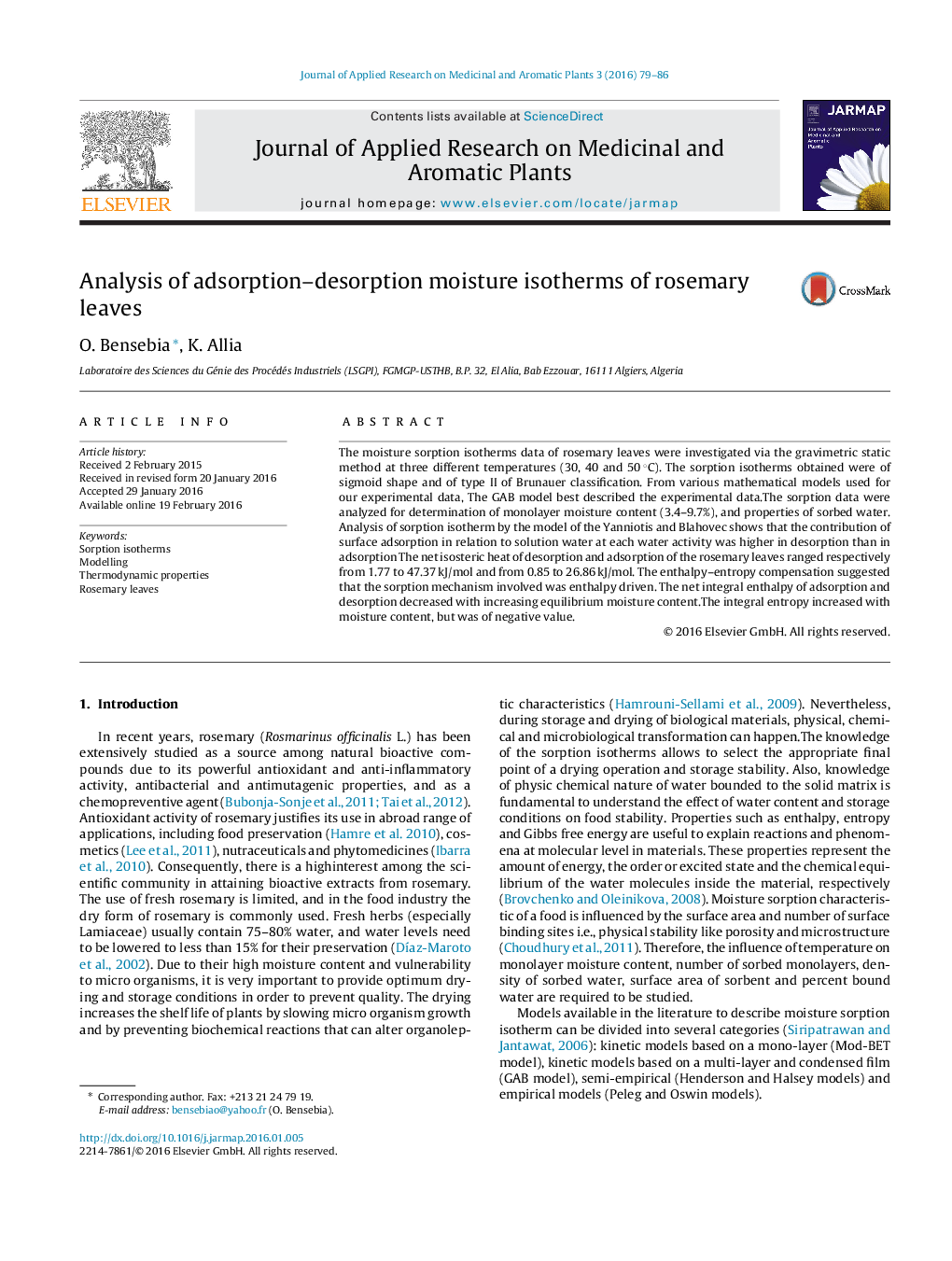| کد مقاله | کد نشریه | سال انتشار | مقاله انگلیسی | نسخه تمام متن |
|---|---|---|---|---|
| 3099121 | 1406618 | 2016 | 8 صفحه PDF | دانلود رایگان |
• The sorption isotherms of rosemary leaves were of BET II type classification.
• The GAB model best described the experimental data.
• The microbiological stability was at a moisture contents less than 0.08–0.12 kg/kg d.b.
• The drying should not approach the moisture content below 0.034–0.090 kg/kg d.b.
• Adsorption of water by rosemary leaves matrix is enthalpy driven.
The moisture sorption isotherms data of rosemary leaves were investigated via the gravimetric static method at three different temperatures (30, 40 and 50 °C). The sorption isotherms obtained were of sigmoid shape and of type II of Brunauer classification. From various mathematical models used for our experimental data, The GAB model best described the experimental data.The sorption data were analyzed for determination of monolayer moisture content (3.4–9.7%), and properties of sorbed water. Analysis of sorption isotherm by the model of the Yanniotis and Blahovec shows that the contribution of surface adsorption in relation to solution water at each water activity was higher in desorption than in adsorption The net isosteric heat of desorption and adsorption of the rosemary leaves ranged respectively from 1.77 to 47.37 kJ/mol and from 0.85 to 26.86 kJ/mol. The enthalpy–entropy compensation suggested that the sorption mechanism involved was enthalpy driven. The net integral enthalpy of adsorption and desorption decreased with increasing equilibrium moisture content.The integral entropy increased with moisture content, but was of negative value.
Journal: Journal of Applied Research on Medicinal and Aromatic Plants - Volume 3, Issue 3, September 2016, Pages 79–86
